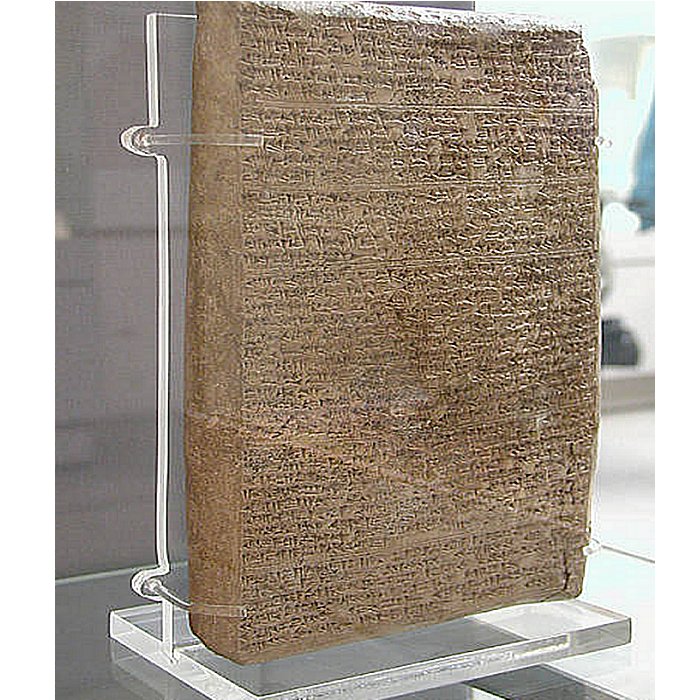Kingdom Of Mitanni: Forgotten For Millennia But Once Great Power Of Ancient West Asia In 2000 BC
A. Sutherland - AncientPages.com - Forgotten for millennia, the Kingdom of Mitanni was discovered in the nineteenth century, and excavations revealed fascinating facts about this unusual kingdom, which once existed in northern Mesopotamia.
Cuneiform tablet containing a letter from Tushratta of Mitanni to Amenhotep III (of 13 letters of King Tushratta). British Museum. Image source
Also known as Hanigalbat, Mitanni flourished during the fourteenth century BC and covered what northern Syria, northern Iraq, and southeastern Turkey today are; archaeologists have not determined its capital.
The ethnicity of the people of Mitanni (sometimes called the 'Land of the Hurrians') is not entirely established. Still, it is believed that the civilization of this kingdom was the product of two ethnic groups: the Hurrians and the Indo-Aryans, whose names are associated with the names of several Indo-Aryan deities, such as Indra, Vayu, Svar, Soma, Rta, and the Devas.
The ancient sources of information about Mitanni come from archaeological finds and old reports, which mainly relate to the history of Assyria, Hittites, or Babylonia and only mention the land of the Hurrians. Biblical descriptions and texts unearthed in Egypt (for example, Amarna Letters) are of great value. However, many facts, especially those related to Mitanni's chronology, remain controversial among historians and even contradict each other.
Cylinder seal, ca. 1500–1350 BC Mitanni. H. 2.7 cm x Diam. 1.5 cm. Credit Line: Gift of Martin and Sarah Cherkasky, 1986Image credit: Metropolitan Museum of Art
"Mitanni, who rose to dominance c. 1500 BCE and managed to secure a large section of Mesopotamian territory in a relatively short period of time. Little information exists about how Mitanni was able to gain so much control so quickly. It seems as though they appeared out of thin air, but this is likely due to the lack of resources regarding this kingdom. Nevertheless, they played an important role in shaping the region at this particular point in history.
At this particular moment, the Kassite dynasty gained influence in Babylon and again expanded Babylonian influence in the region. With the Mitanni kingdom growing its power to the west, Assyria had become wedged between two stronger powers, resulting in Assur and other Assyrian territories falling briefly under Mitanni's control." 1
Like several other states of the ancient Near East, Mitanni was formed as a result of the migration of peoples in the 19th-16th centuries BC. Around 1800-1700 BC, the Hurrian tribes inhabiting the Armenian highlands began to expand to the south. They occupied more extensive areas of Asia Minor, northern Mesopotamia, and Syria for centuries.
Sealed tablet found in Alalakh reporting a legal case presented by the local ruler Niqmepa before King Shaushtatar of Mittani, British Museum. Image credit: Fæ - CC BY-SA 3.0
Much of what we know about these people comes not from indigenous sources of their history because there is a lack of them. Few records exist today, and these come from Assyrian, Egyptian, and Hittite sources, inscriptions from nearby places in Syria, and the world's oldest horse training manual written by Kikkuli of Mitanni.
Kikkuli was a famous person. He was the "master horse trainer of the land of Mitanni," and author of a chariot horse training text written mainly in the Hittite language dating to the Hittite New Kingdom (around 1400 BC).
The text is noteworthy both for the information it provides about the development of Indo-European languages (both Hittite and the Hurian) and for its content. The text was inscribed in the Hittite language on four cuneiform tablets, which were unearthed during excavations of Bogazköy, (Turkish: “Gorge Village”) modern Bogazkale) and the ancient Hittite capital, Hattusha, in 1906 and 1907.
Gebel el-Arak Knife. Image credit: ALFGRN - CC BY-SA 2.0
Still, interestingly, the numerals 1, 3, 5, 7, 9 and other technical terms used in the manual of Kikkuli are not Hittite but related to the Indic (Indo-Aryan) languages), closely associated with the breeding and training of horses.
It is known that Mitanni reached the height of its power between 1500 and 1240 BC and controlled trade routes up from the Euphrates to Carchemish, along with the upper Tigris and its headwaters at Nineveh.
It had diplomatic and trade relations with Egypt , and with India to the East.
The Hurrians, called 'Horittes' in the Bible, spoke a language similar to Urartian. Their place of origin has not been precisely determined by it is believed they came from or by way of the Trans-Caucasian region.
Toward the end of the first dynasty of Babylon (c.1595 BC), the Hurrians moved into upper Mesopotamia and eastern Syria in force, and in 1350 BC, they were powerful enough among strong neighbors such as Assyria, Babylonia, and the Kingdom of Hatti.
Some other sources of knowledge about Mitanni come from a Hurrian letter discovered at Amarna in Egypt from the Mitannian king Tushratta to the pharaoh Amenophis III; there is also a religious text unearthed at Ugarit (modern town Ras Shamra) on the Syrian coast in the vicinity of Latakia.
Mitanni was undoubtedly one of the great powers of ancient West Asia in the second millennium BC. However, as we mentioned earlier, almost all that is known about the kingdom is based on foreign sources.
From Hittite sources is known, for example, that the early Hittite kings were in a long war with the Hurrians and Mitanni over possession of northern Syria and the Taurus Mountains.
At that time, Mitanni was called 'Hanigalbat' by the Hurrians and the Assyrians. Perhaps the most outstanding Mitannian king was Saustatar (Shaushshatar), who reigned c. 1500–c.1450 BC) and the last independent king of Mitanni was Tushratta, who died c. 1360 BC) and under whose reign Wassukkani was sacked by the Hittite king Suppiluliumas I.
After many political struggles, the kingdom of Mitanni was finally incorporated into the Assyrian empire and became an Assyrian province.
Written by – A. Sutherland AncientPages.com Staff Writer
Copyright © AncientPages.com All rights reserved. This material may not be published, broadcast, rewritten or redistributed in whole or part without the express written permission of AncientPages.com
Expand for referencesReferences:
- History, Captivating. Assyrian History
M.Van De Mieroop, A History of the Ancient Near East, ca. 3000-323 BC
T. Bryce, The Kingdom of the Hittites
Trevor Bryce et al. , "The Routledge Handbook of the Peoples and Places of Ancient Western Asia"
More From Ancient Pages
-
 Ten Ancient Jugs May Reveal The Location Of The Biblical Tabernacle
Archaeology | Jul 21, 2017
Ten Ancient Jugs May Reveal The Location Of The Biblical Tabernacle
Archaeology | Jul 21, 2017 -
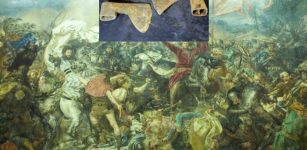 600-Year-Old Axe Heads Used In The Battle Of Grunwald Found in Poland
Archaeology | Sep 1, 2020
600-Year-Old Axe Heads Used In The Battle Of Grunwald Found in Poland
Archaeology | Sep 1, 2020 -
 How Did Climate Change Impact European Ice Age Humans?
Earth Changes | Aug 21, 2024
How Did Climate Change Impact European Ice Age Humans?
Earth Changes | Aug 21, 2024 -
 Japan’s Ancient Practice Of Cranial Modification: The Case Of The Hirota People In Tanegashima
Archaeology | Aug 18, 2023
Japan’s Ancient Practice Of Cranial Modification: The Case Of The Hirota People In Tanegashima
Archaeology | Aug 18, 2023 -
 Drought Was Not The Reason Cahokia, North America’s First City Was Suddenly Abandoned – New Study
Archaeology | Jul 4, 2024
Drought Was Not The Reason Cahokia, North America’s First City Was Suddenly Abandoned – New Study
Archaeology | Jul 4, 2024 -
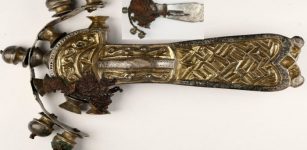 5th-Century Tomb With Finds Of Historical And Artistic Value Discovered In Eastern Bohemia
Archaeology | Mar 8, 2021
5th-Century Tomb With Finds Of Historical And Artistic Value Discovered In Eastern Bohemia
Archaeology | Mar 8, 2021 -
 On This Day In History: Emperor Romulus Augustus Deposed – On September 4, 476
News | Sep 4, 2016
On This Day In History: Emperor Romulus Augustus Deposed – On September 4, 476
News | Sep 4, 2016 -
 How Is DNA Preserved In Archaeological Sediments For Thousands Of Years
Archaeology | Jan 3, 2022
How Is DNA Preserved In Archaeological Sediments For Thousands Of Years
Archaeology | Jan 3, 2022 -
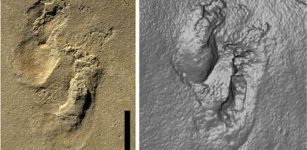 Controversial Discovery Of 5,7-Million-Year-Old Footprints On Crete Could Re-Write History Of Human Evolution
Archaeology | Sep 5, 2017
Controversial Discovery Of 5,7-Million-Year-Old Footprints On Crete Could Re-Write History Of Human Evolution
Archaeology | Sep 5, 2017 -
 Selinunte: Latest Excavations Bring To Light A New Small Temple – What Ritualistic Practices Will Be Revealed One Day?
Archaeology | Aug 12, 2024
Selinunte: Latest Excavations Bring To Light A New Small Temple – What Ritualistic Practices Will Be Revealed One Day?
Archaeology | Aug 12, 2024 -
 Could Neanderthals Meditate? Scientists Investigate
Archaeology | Jun 30, 2022
Could Neanderthals Meditate? Scientists Investigate
Archaeology | Jun 30, 2022 -
 Controversial Theory Suggests Ancient Egyptians Were Founders Of Chinese Civilization
Archaeology | Sep 5, 2016
Controversial Theory Suggests Ancient Egyptians Were Founders Of Chinese Civilization
Archaeology | Sep 5, 2016 -
 Fossils Of Mysterious Homo Naledi Change Our Understanding Of Evolution
Archaeology | May 10, 2017
Fossils Of Mysterious Homo Naledi Change Our Understanding Of Evolution
Archaeology | May 10, 2017 -
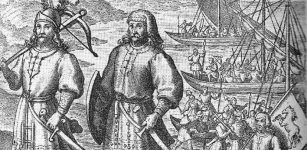 Hengist And Horsa: Legendary Anglo-Saxon Warrior Brothers And Leaders Of First Settlers In Britain
Featured Stories | May 28, 2016
Hengist And Horsa: Legendary Anglo-Saxon Warrior Brothers And Leaders Of First Settlers In Britain
Featured Stories | May 28, 2016 -
 New Evidence Of Human Habitation At Panga ya Saidi Cave, Kenya That Dates Back 78,000 Years
Archaeology | May 11, 2018
New Evidence Of Human Habitation At Panga ya Saidi Cave, Kenya That Dates Back 78,000 Years
Archaeology | May 11, 2018 -
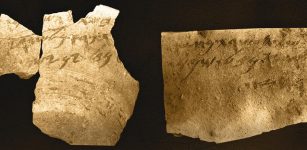 Two Scribes Penned 8th Century ‘Samaria Ostraca’ Inscriptions Unearthed In Samaria
Archaeology | Jan 23, 2020
Two Scribes Penned 8th Century ‘Samaria Ostraca’ Inscriptions Unearthed In Samaria
Archaeology | Jan 23, 2020 -
 Mystery Of The Ancient Foggaras: Sahara’s Incredible Masterwork Of Antiquity
Ancient Technology | May 20, 2016
Mystery Of The Ancient Foggaras: Sahara’s Incredible Masterwork Of Antiquity
Ancient Technology | May 20, 2016 -
 Sacred Hidden Buyan Island And The Mysterious Alatyr Stone With Healing Powers May Have Existed
Featured Stories | Mar 22, 2018
Sacred Hidden Buyan Island And The Mysterious Alatyr Stone With Healing Powers May Have Existed
Featured Stories | Mar 22, 2018 -
 Famine And Disease Drove The Evolution Of Lactose Tolerance In Europe
Archaeology | Jul 27, 2022
Famine And Disease Drove The Evolution Of Lactose Tolerance In Europe
Archaeology | Jul 27, 2022 -
 Paleolithic Inhabitants Of Cyprus Established Settlements Much Earlier Than Previously Estimated
Archaeology | May 17, 2024
Paleolithic Inhabitants Of Cyprus Established Settlements Much Earlier Than Previously Estimated
Archaeology | May 17, 2024

